
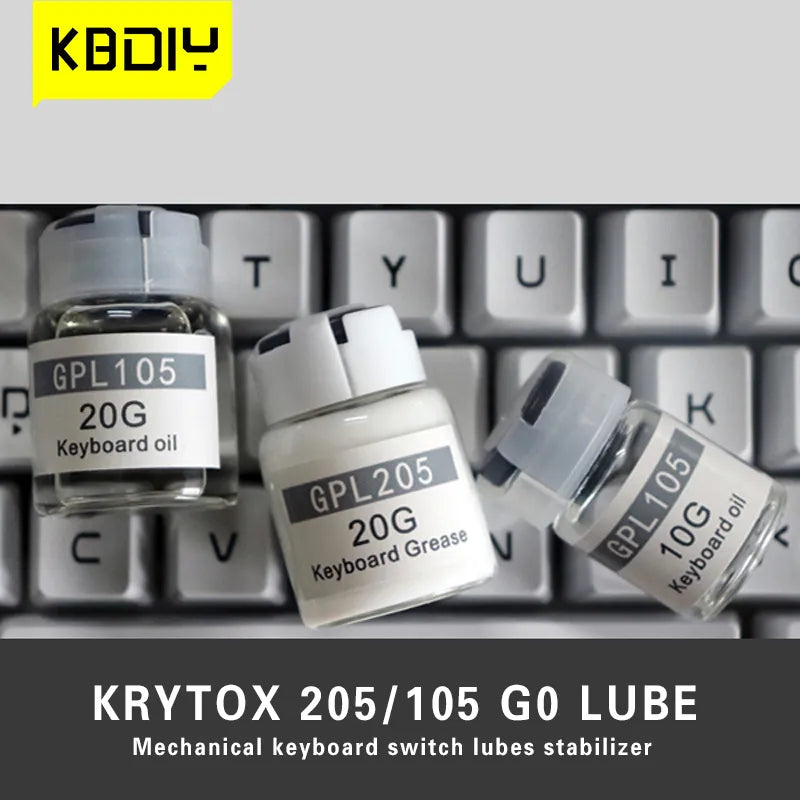
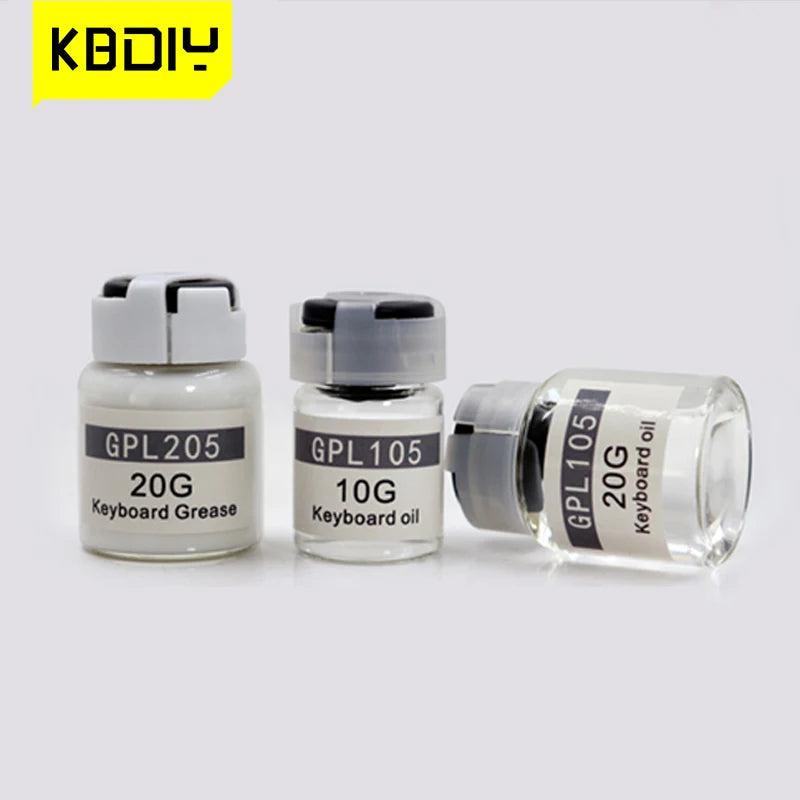

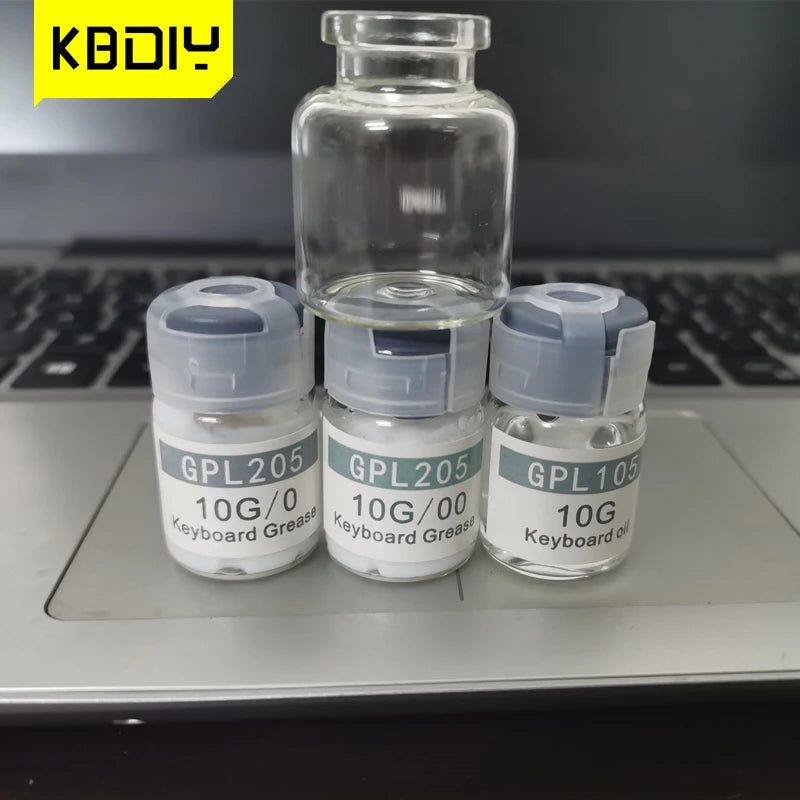

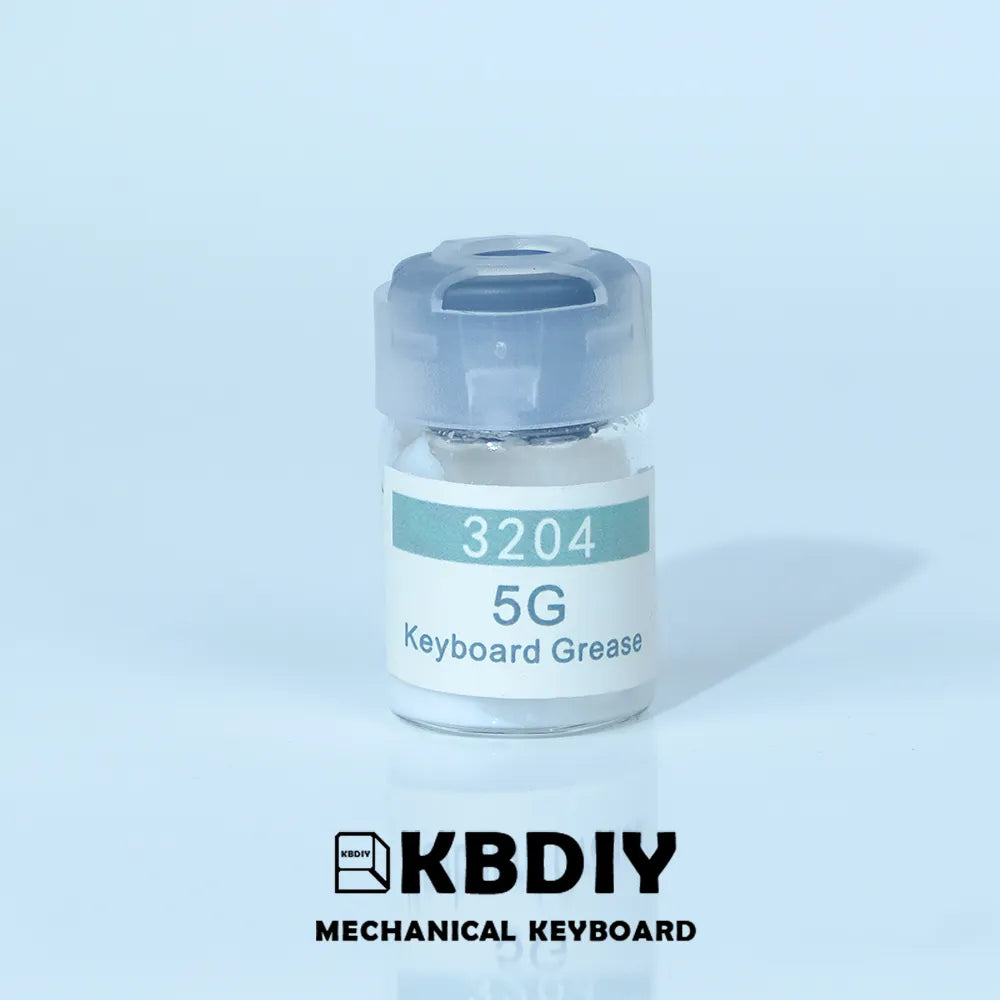
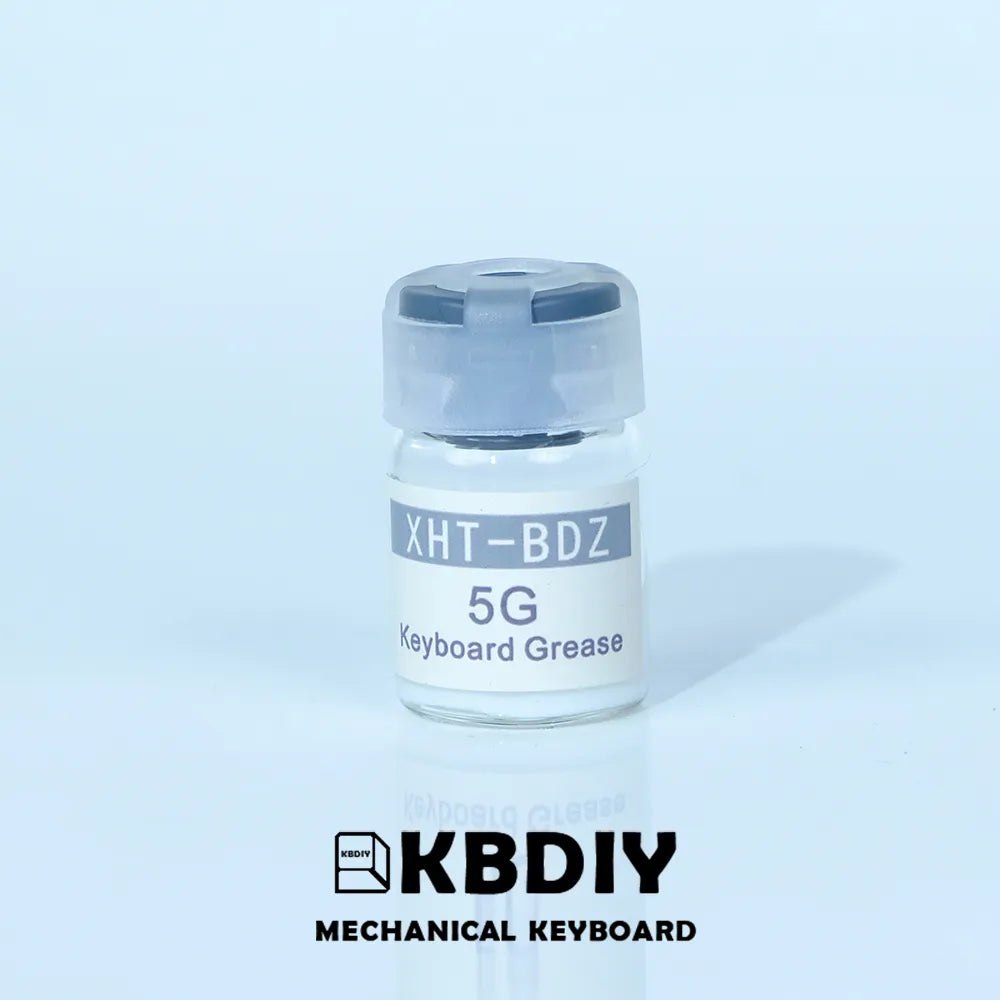

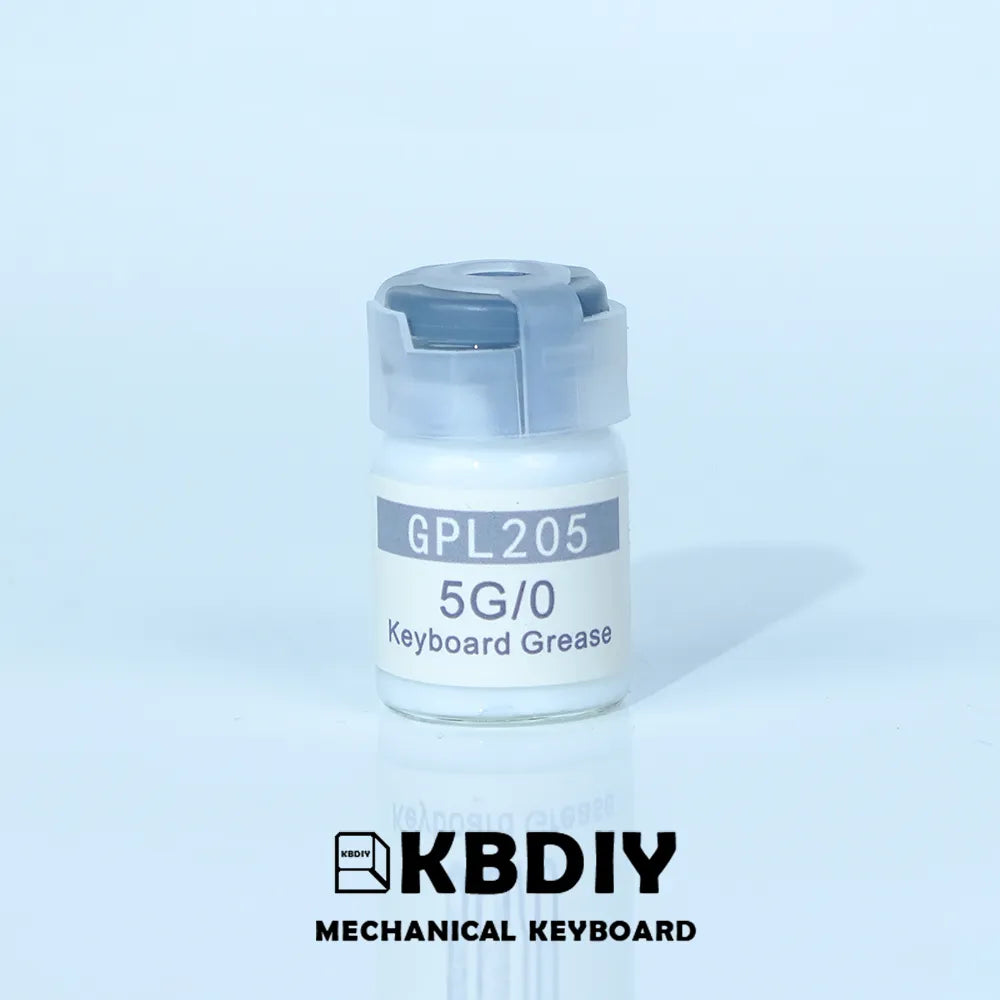
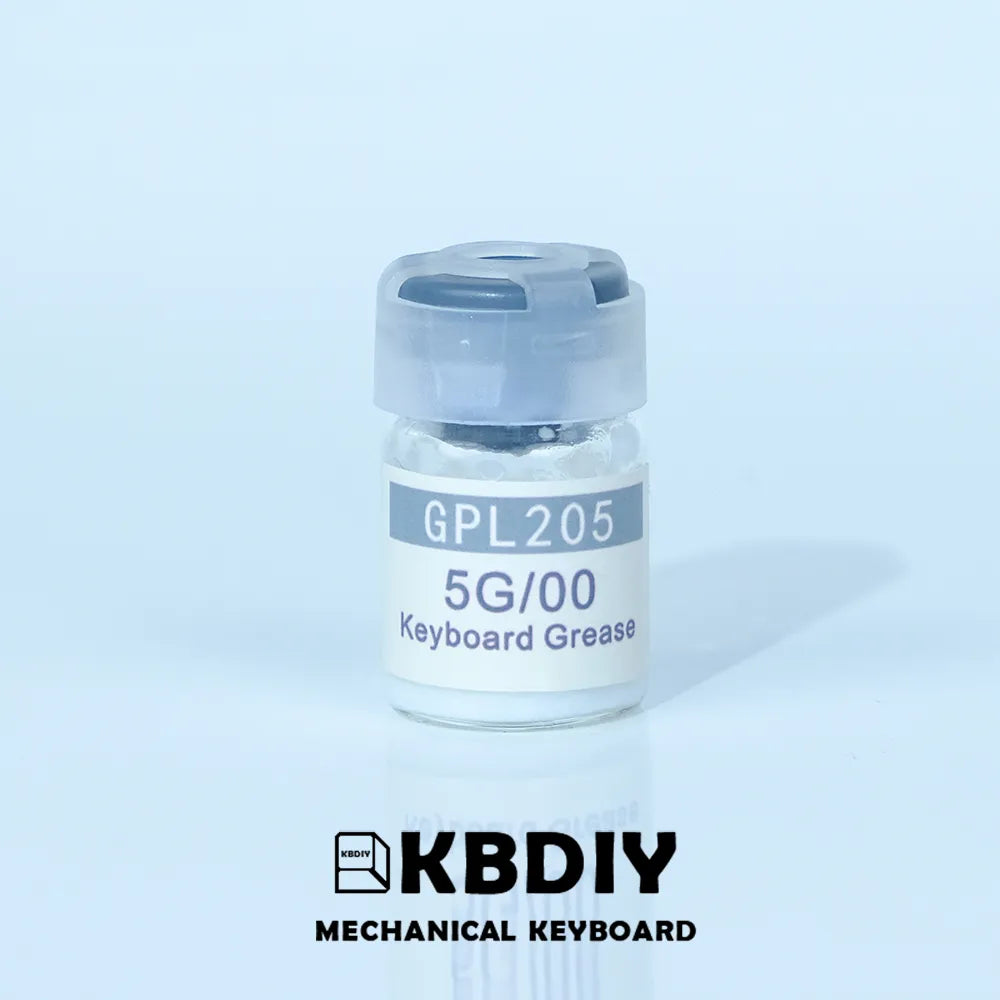


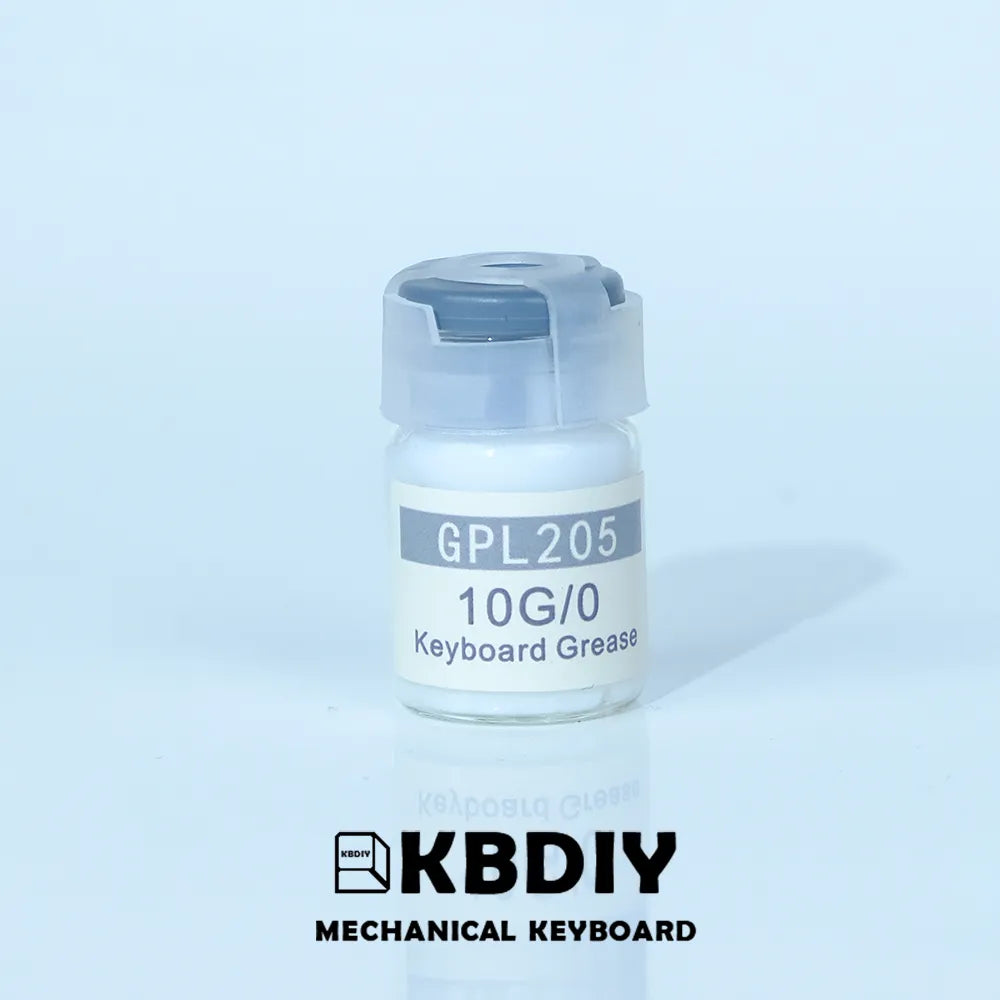
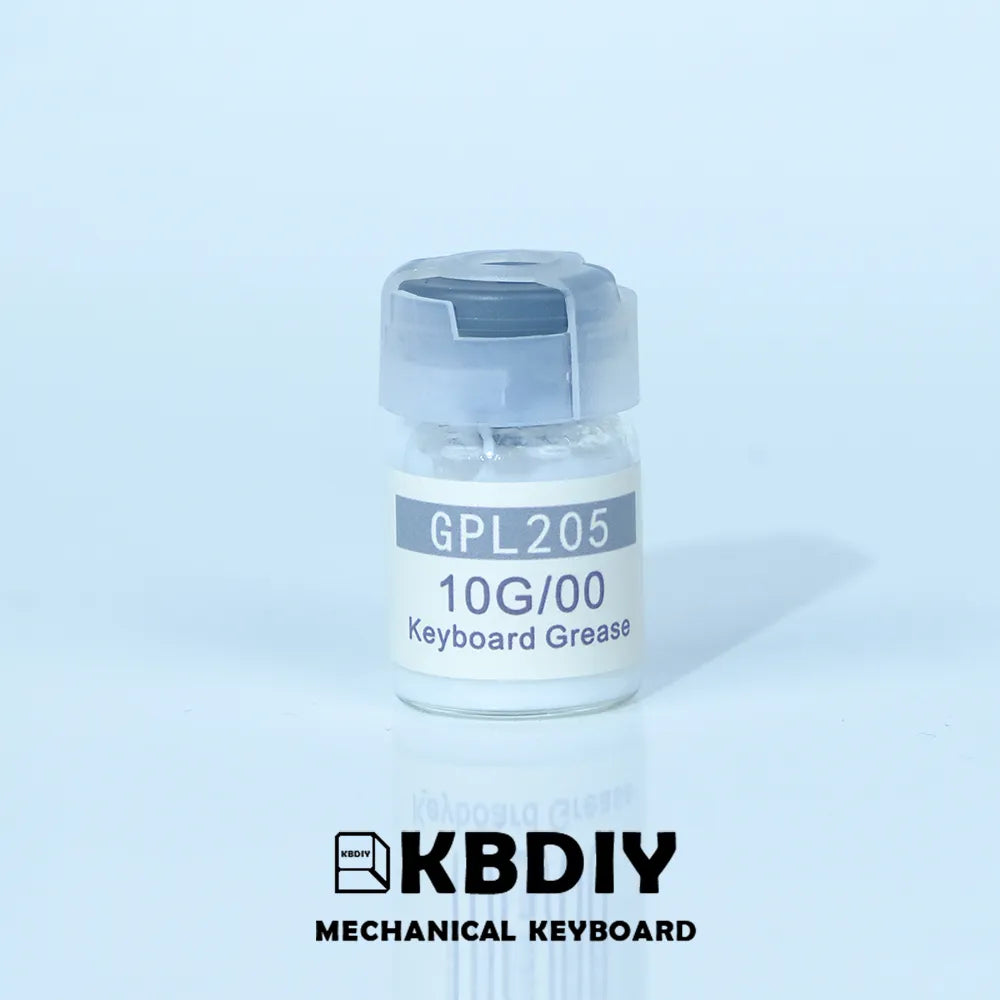
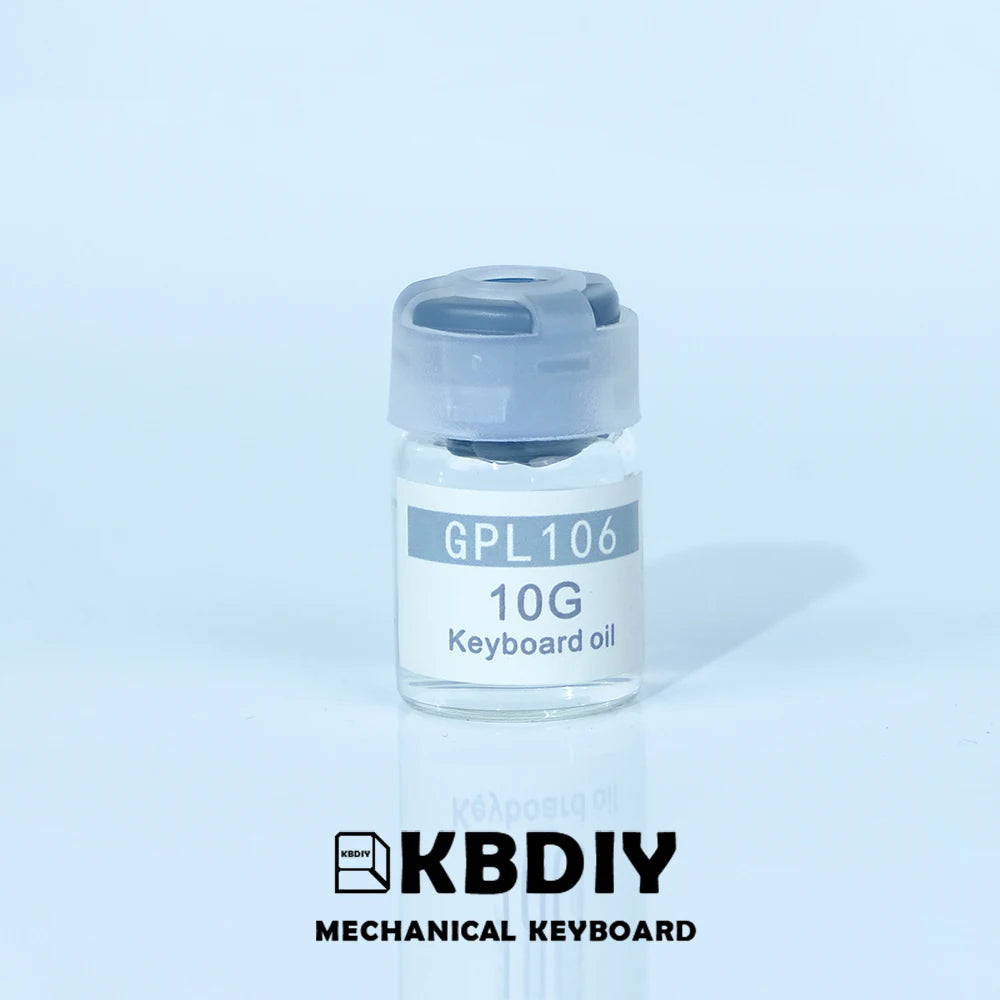
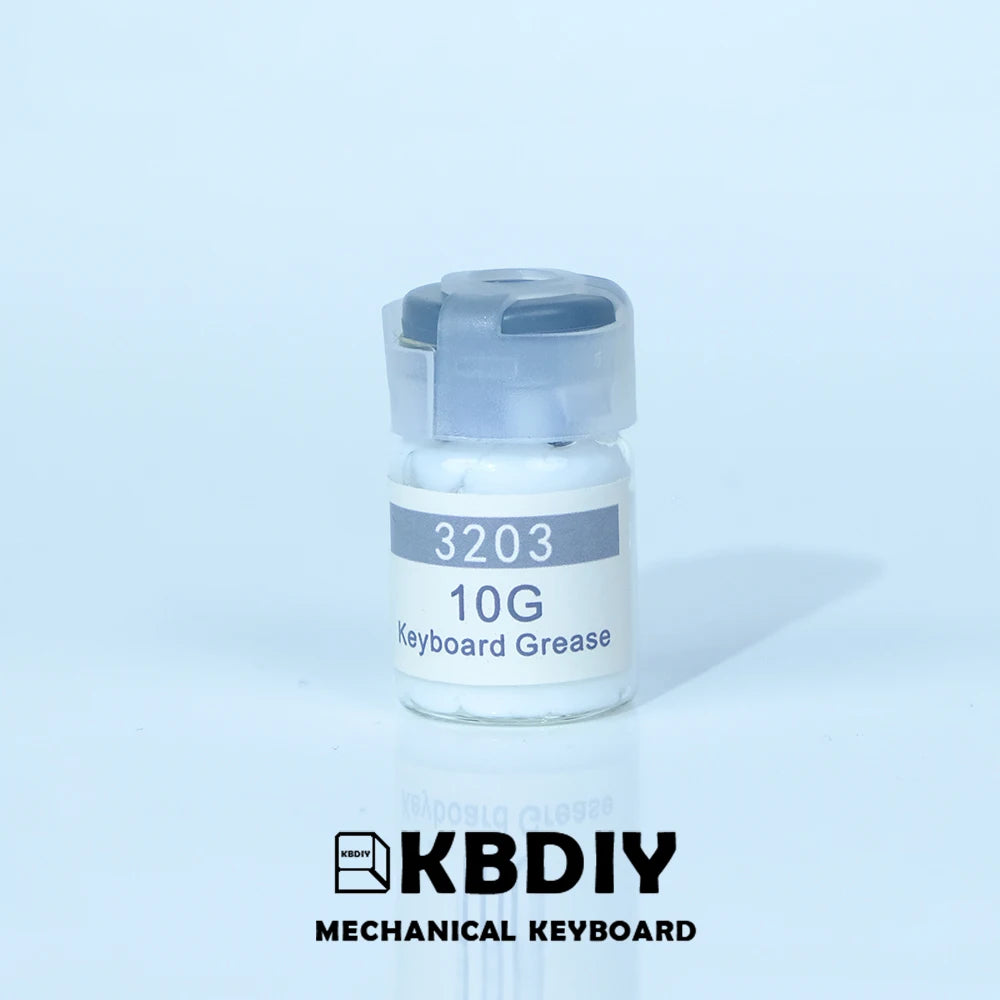
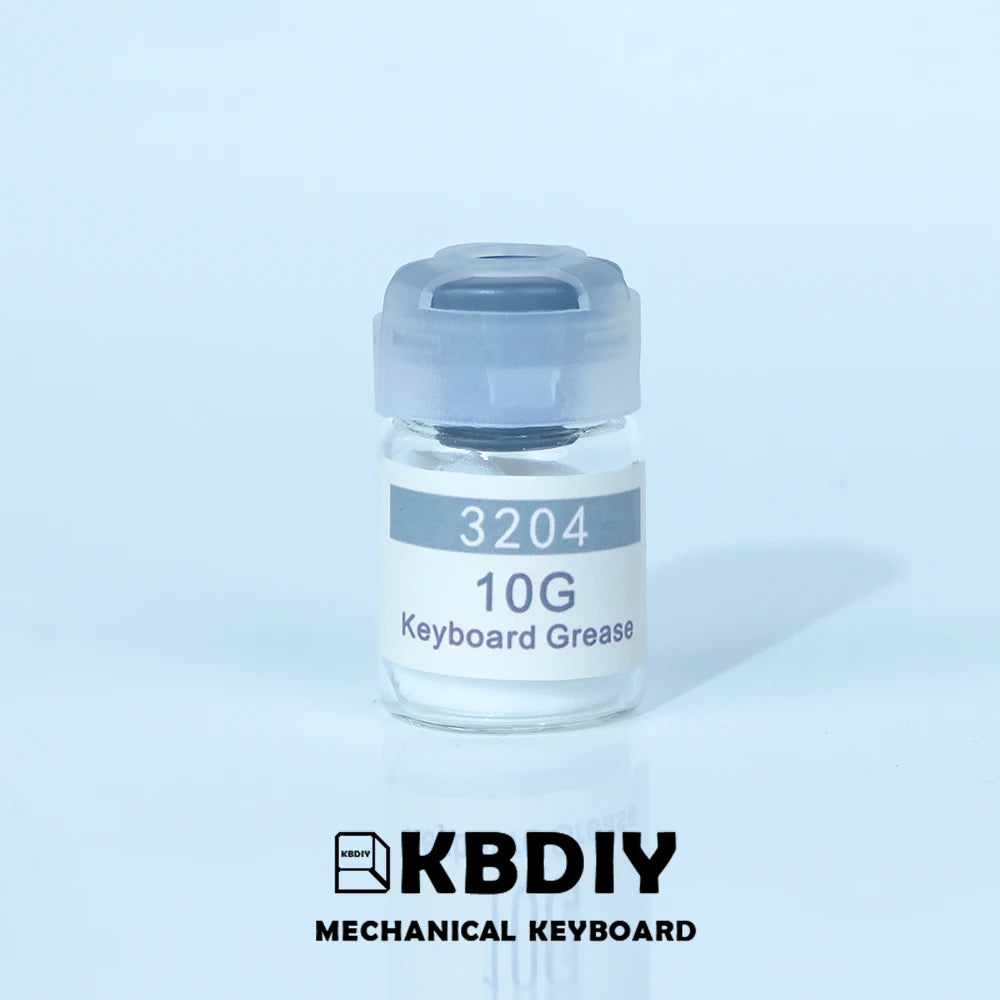
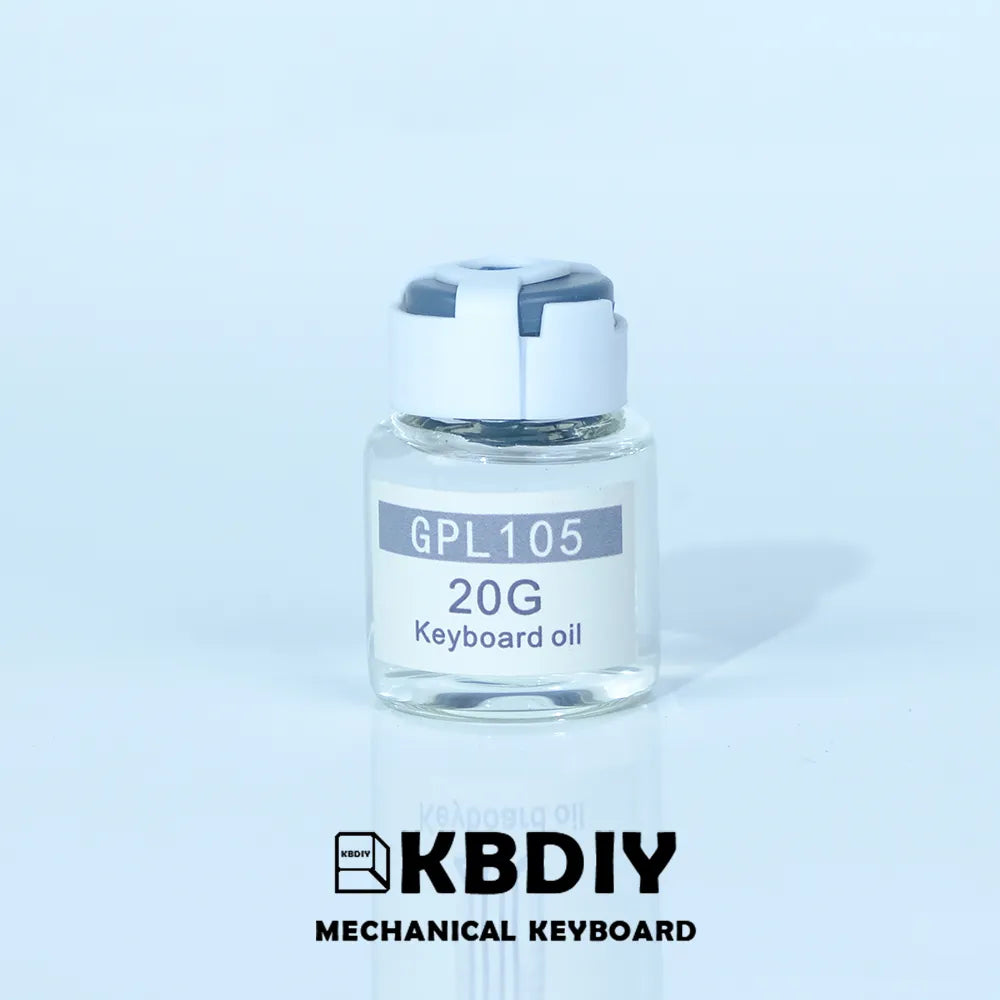
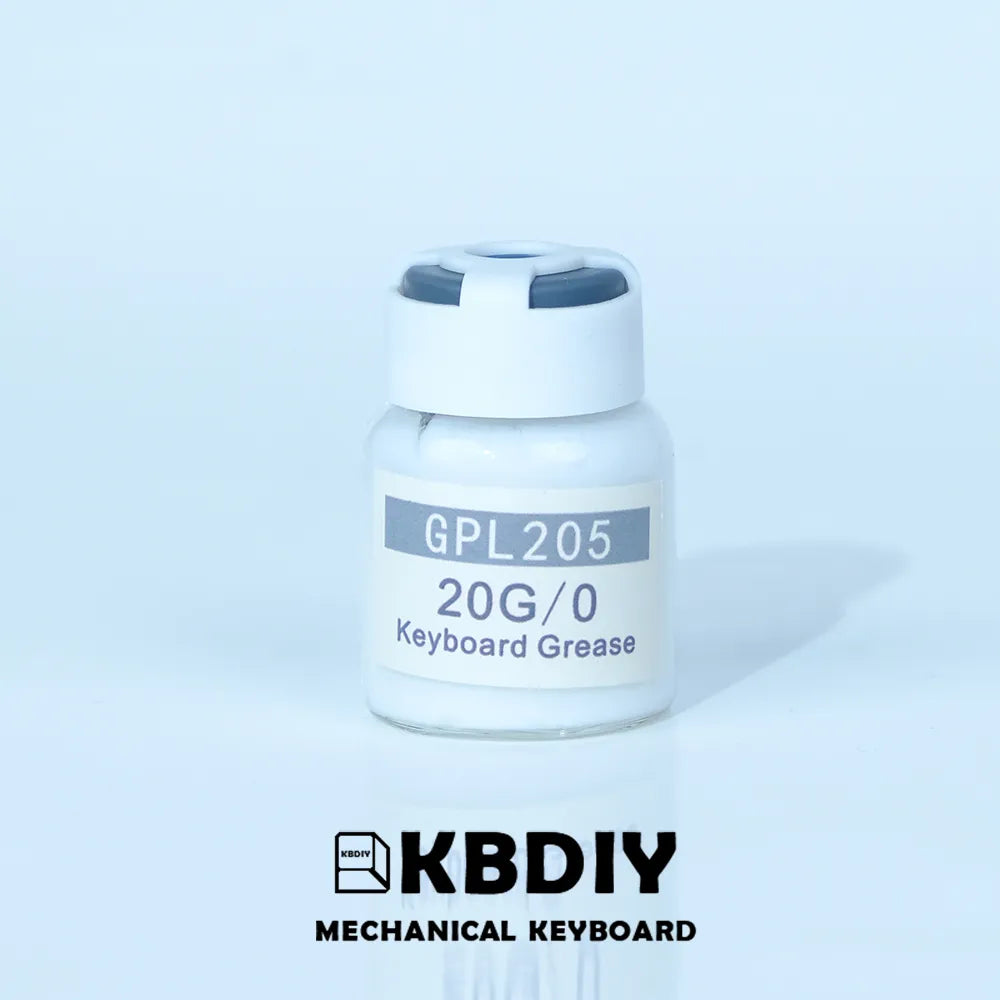
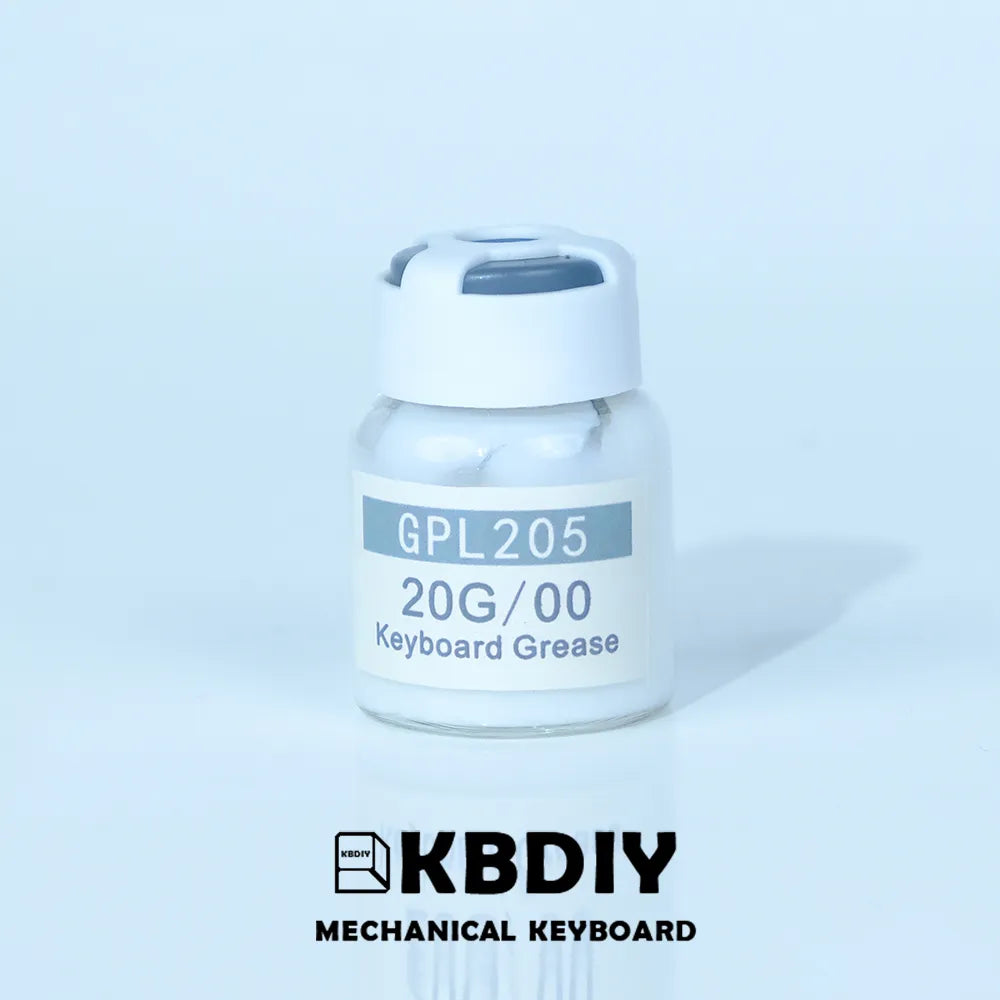
Lube, Grease & Oil for Mechanical Keyboard Switches
Designed for tactile and clicky switches, these oils enhance performance by smoothing out action and dampening undesirable noise such as spring jitter.
GPL205 G0 / GPL205 G00 Keyboard Lubricants: These lubricants are perfect for linear switches and stabilizer wires. GPL205 G0 provides an ideal balance of tactility and smoothness, improving the feel and acoustics of your keyboard. GPL205 G00, being less dense, is suitable for those desiring a lighter touch. Both can be mixed with GPL105 for customized tactility. GPL205 G0, known for its versatility, is a staple in the mechanical keyboard community.
3204 / 3203 Keyboard Lubricants: With a semi-fluid nature and suitable for both tactile and clicky switches, these lubricants are also a great choice for linear and Topre switches. The 3204 variant is preferred for linear switches due to its lower viscosity, while 3203, with even lower viscosity, offers a more tactile feel. Both provide a smooth 'break-in' for switches, ensuring long-lasting lubrication without migration.
XHT-BDZ Stabilizer Grease: This viscous PFPE grease is designed to significantly reduce stabilizer wire rattle, offering a more stable and silent operation. XHT-BDZ is ideal for keyboard enthusiasts looking to achieve a professional-grade modification.
Each product provides enough lubricant for approximately 300 switches. For optimal application, use GPL105 for springs, a mixture of GPL105 and GPL205 for the shafts, and GPL205 G0 or thicker GPL205 for stabilizers, with the latter offering a more solid feel.
Remember, GPL205 G0 and GPL205 only differ in feel—GPL205 being the thicker option. Choose according to your preference for tactile feedback and key smoothness.
Please note: The density of GPL105 and GPL205 lubricants is higher than water and traditional oils like WD40, providing a concentrated performance that ensures a small amount goes a long way. Despite their creamy texture and slight milky scent, remember these are industrial-grade, non-edible products. For any skin contact, seek medical attention promptly.
Pairs well with
If you have any questions, you are always welcome to contact us. We'll get back to you as soon as possible, within 24 hours on weekdays.
Shipping Information
Use this text to answer questions in as much detail as possible for your customers.
Customer Support
Use this text to answer questions in as much detail as possible for your customers.
FAQ’s
Use this text to answer questions in as much detail as possible for your customers.
Contact Us
Use this text to answer questions in as much detail as possible for your customers.
A Name You Can Trust
Crafted with precision and passion, KreativeKeys isn't just a store—it's a gateway to a tailor-made typing experience. We stand by every product, every build, and every interaction to ensure your satisfaction.

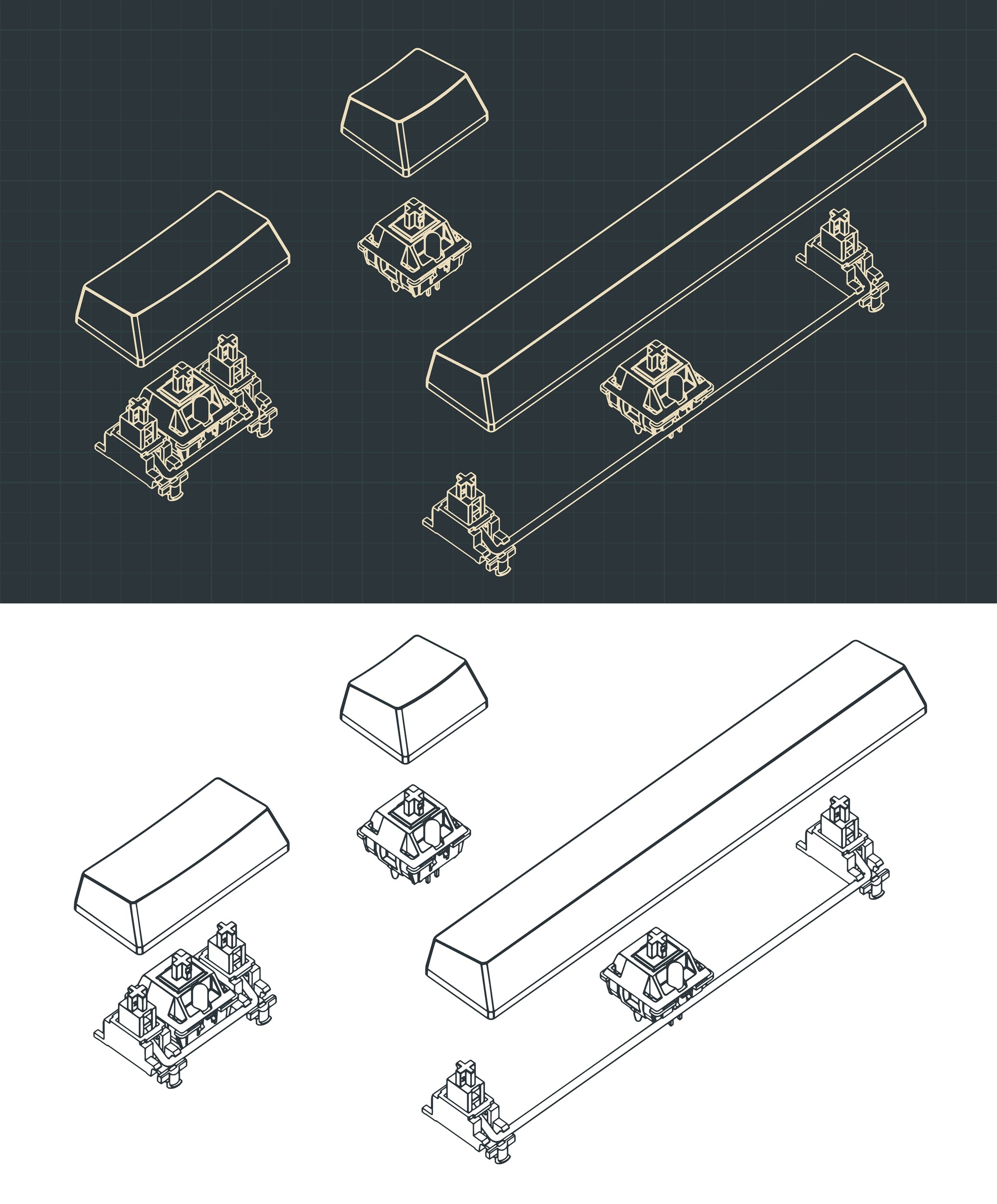
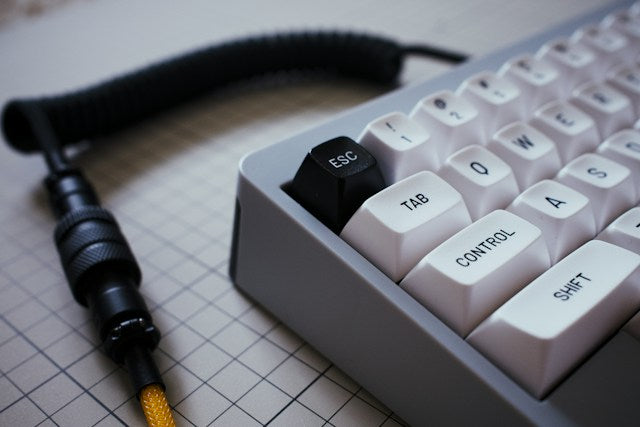

FAQs
Please read our FAQs page to find out more.
What are your shipping costs?
We believe in no hidden fees. For that reason, we're delighted to offer free shipping on any order, for any product, always.
Where do you ship to?
We ship to the United Kingdom and all European Union countries except Cyprus.
How long does shipping take?
After your payment is successful, we ship your goods within 1-2 working days. Delivery usually takes 7-12 business days, though times can vary by country.
What is your return policy?
At KreativeKeys, we aim for your complete satisfaction with every purchase. That's why we offer a straightforward, 14-day no-questions-asked return policy from the day you receive your item. If it doesn’t meet your expectations, let us help you return it.
What are ISO keycaps and what does ISO-DE mean?
ISO keycaps refer to keycap sets designed according to the International Organization for Standardization's layout for keyboards, which includes specific characteristics like the shape of the "Enter" key and the placement of certain punctuation symbols.
The language options, such as ISO-DE for German and ISO-FR for French, indicate the inclusion of language-specific characters (e.g., ä, ö, ü, ß for German, and é, à, ç, è for French) tailored to the typing needs of those language speakers. This design accommodates the unique alphabet and punctuation requirements of different languages within the standardized ISO layout framework.

